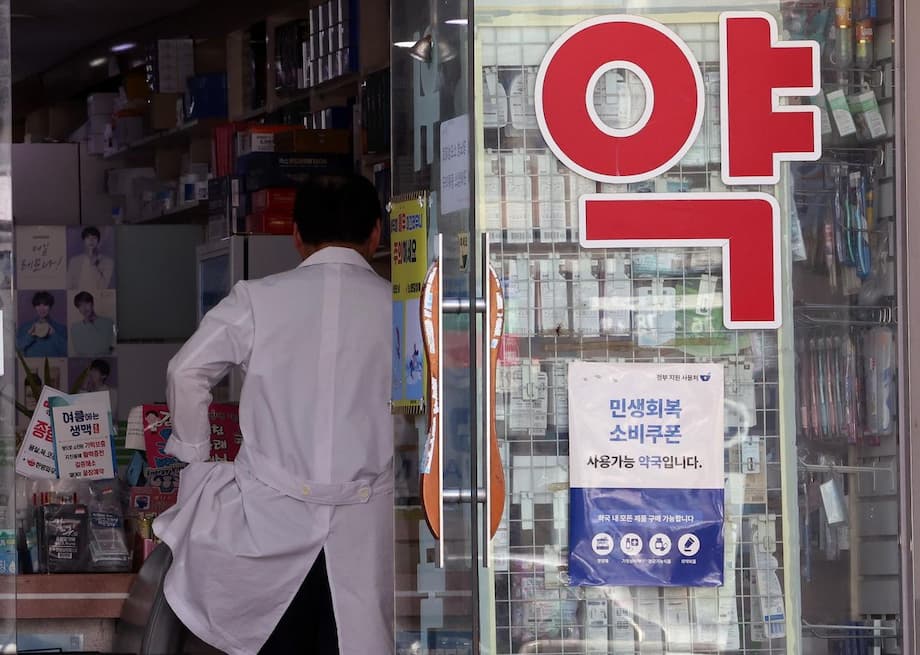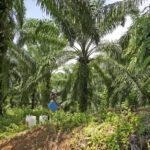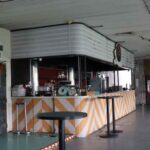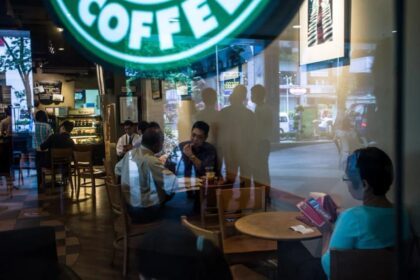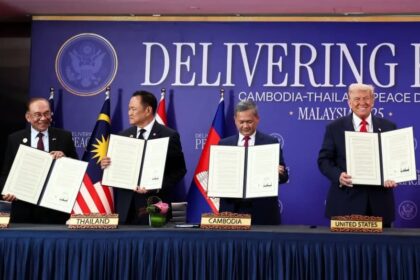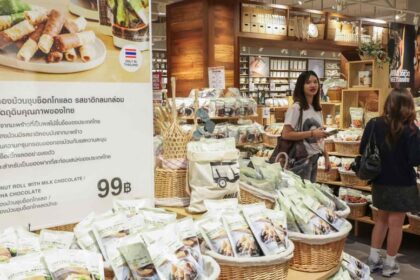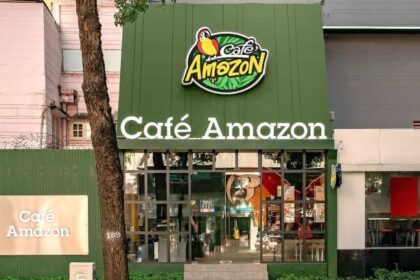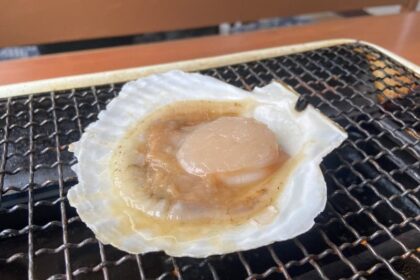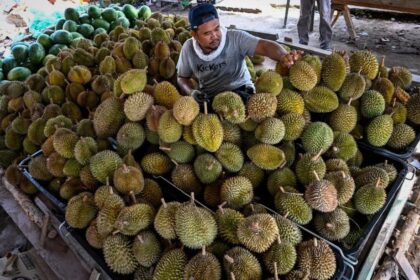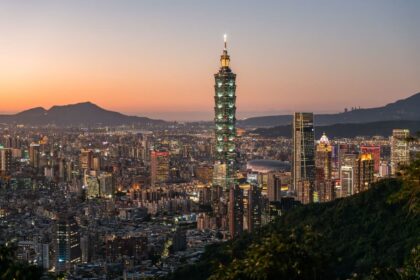How skincare tourism turned pharmacies into destinations
In South Korea, the humble neighborhood pharmacy has become a magnet for international visitors chasing clearer skin and faster recovery from cosmetic treatments. What once served mostly locals now draws tourists who arrive with shopping lists, screenshots, and precise requests for creams that calm acne, fade pigmentation, or speed wound healing. Data points to a rapid shift. Korea Tourism Data Lab reports that the number of medical transactions by international visitors jumped from 593,577 in 2020 to 2,929,831 in 2024. In the first half of the current year, pharmacies accounted for close to 60 percent of all foreign medical consumption, outpacing dermatology clinics, and spending at pharmacies surpassed 60 billion won (about 43 million dollars). In August alone, more than 309,000 medical transactions by foreign visitors were recorded.
The momentum is visible on the ground. Pharmacies in busy districts such as Myeongdong, Hongdae, and Gangnam stock dedicated shelves for what staff and customers call functional skincare, items that sit between medicine and beauty. Shop windows advertise tax free shopping, staff offer multilingual support, and tourists present phone galleries packed with product names to ensure they buy the exact items their friends requested at home. The shift aligns with a broader pattern in Korean tourism, where health and beauty experiences have become part of the itinerary, from dermatology procedures to wellness-focused shopping.
Online platforms have stepped in to guide this new behavior. Creatrip, a travel service used by foreign visitors, launched a pharmacy category that highlights selected stores in Seoul and Busan. The platform connects shoppers with licensed pharmacists, offers language support in English, Chinese, and Japanese, and curates shelves of cosmeceuticals, a category that blends cosmetic appeal with therapeutic claims. A spike in bookings for pharmacy visits in September illustrates how a shopping errand has evolved into an experience in its own right.
Why pharmacies, not beauty stores
Many tourists still visit large health and beauty chains for mainstream products, yet more shoppers now reserve pharmacy time for items that promise clearer results. The draw is a mix of stronger actives, pharmacist guidance, and products exclusive to the pharmacy channel. Prices for popular creams and gels are often competitive compared to beauty chains, and the ability to ask a pharmacist how to use a treatment on sensitive or post procedure skin adds confidence. This blend of access, advice, and perceived efficacy explains why the pharmacy stop often follows a clinic visit.
Cosmeceuticals explained
Cosmeceuticals are consumer products that borrow from clinical dermatology. They contain active ingredients at levels intended to produce visible changes in the skin, such as reducing inflammation, fading spots, or supporting wound repair. Unlike prescription drugs, these items are sold to walk in customers, although pharmacists may counsel on use, frequency, and interactions with other treatments. In Korea, the pharmacy channel is known for housing this middle ground between medicine and beauty, which is why visitors in search of clearer skin gravitate there.
Trusted advice and language support
Pharmacies in tourist districts are built for international shoppers. Multilingual shelf tags, staff who can explain how to apply a product, and guidance for specific concerns, from acne to scar management, make the experience feel personal. Several stores provide printed guides in multiple languages. Many visitors now plan their stop after dermatology sessions to pick up healing creams and scar gels recommended during consultations.
The social media effect
The rise of the K pharmacy visit mirrors a wave of social content. Hashtags that celebrate a Korea glow up spotlight pharmacy shelves as much as museum trips, and haul videos showcase scar gels and regeneration creams alongside sheet masks. Tourists often shop with reference photos, a habit pharmacists say is now typical. The result is a feedback loop: content accelerates demand, which in turn produces more content as new visitors post their finds.
A 32 year old visitor from Singapore, Amanda Min, described how online discovery shaped her plan. She said she had come armed with a list built from TikTok searches for Korean pharmacy recommendations. A Japanese tourist, Fukui Marie, 25, shared a similar story, explaining that she wanted a regenerative cream after a dermatology appointment in Seoul. Small interactions like these capture a large shift toward pharmacy centric beauty shopping among foreign travelers.
A Seoul pharmacist, Kim In young, sees a consistent pattern among international visitors who book a skin treatment, then shop for pharmacy only aftercare. Before describing what has changed, Kim highlighted why this workflow appeals to tourists.
Visiting a pharmacy after getting treatment at a nearby dermatology clinic has become a standard course for foreign tourists. They are popular because they are perceived as more effective and often priced lower than large beauty chains.
The ripple effect is measurable. Creatrip reported a sharp weekly jump in pharmacy category bookings after launch, and the Seoul Tourism Foundation has tallied a surge in foreign spending on beauty services compared with pre pandemic years. Vlogs and short clips, many filmed in Myeongdong and Hongdae pharmacies, continue to amplify the trend.
Inside a modern Korean pharmacy
The new flagship spaces look closer to minimalist lifestyle stores than to traditional drug counters. At places like the Optima Wellness Museum Pharmacy in Gangnam, spacious shelves hold curated ranges of acne solutions, scar care, barrier support, and vitamins. Labels often appear in Korean, English, Chinese, and Japanese. Digital tax refund services and card friendly counters streamline checkout. Some pharmacies, responding to heavy tourist volumes, even warn of sell outs on viral products to help visitors plan their route.
It is also a regulated retail environment. Over the counter medicines are sold only in pharmacies in Korea, not online, which is why price comparison can be difficult. Stock, promotional discounts, and export limits vary by location, so visitors often compare two or three pharmacies in the same neighborhood before making a bulk purchase. Payment is simple. Major cards are accepted, and contactless transactions are now widely used by travelers from regions where tap to pay is standard.
Tax refund and payment tips
Many pharmacies in tourist zones offer tax free shopping. Bring a passport, ask staff to process the tax refund at purchase, and keep receipts in case airport checks are required. If your card supports tap to pay, you can use it widely in Seoul and Busan. Currency exchange kiosks are common in shopping districts, but most pharmacy transactions run smoothly on cards.
The most sought after K pharmacy products
Visitors make a beeline for products with clear use cases. Pharmacists describe steady demand for acne spot creams, scar gels, barrier strengthening moisturizers, and pigmentation care. The names that appear again and again in travel videos and customer requests match what you will find on front displays.
- Madecassol Care: A classic for healing cuts, burns, and post procedure wounds. Powered by Centella Asiatica extract, it calms inflammation and supports faster skin repair. Many travelers use it to protect a sensitized skin barrier and to reduce redness during recovery.
- Acnon Cream: A go to for red, inflamed pimples and pustular acne. This product combines anti inflammatory and antibacterial agents, including ibuprofen piconol and isopropyl methylphenol, to reduce swelling while targeting acne causing bacteria. Pharmacists recommend it for sudden painful breakouts rather than whiteheads or blackheads.
- Noscarna Gel: A staple for softening and flattening scars, from acne marks to surgical scars. Ingredients such as heparin sodium, allantoin, and dexpanthenol help hydrate, improve texture, and gradually lighten scar appearance with consistent use.
- Melatoning Cream: Long favored for fading dark spots and uneven tone. It targets hyperpigmentation, including sun spots and post acne marks. Some versions contain hydroquinone, so usage often follows pharmacist guidance and careful attention to sun protection.
- Rejuvenex Cream with PDRN: Sought for barrier support and regeneration. PDRN, a polynucleotide derived from salmon DNA, is popular with patients after dermatology treatments. Visitors describe calmer redness and a more even tone with overnight use.
Pharmacy shelves also feature acne gels for clogged pores, barrier creams with panthenol, and brightening options with niacinamide. Sales data underscores the demand. One major manufacturer reported that three of its pharmacy skin treatments, including products for acne, scars, and pigmentation, reached 35.5 billion won in sales in the first half of the year, up by more than a third from the prior period. Other companies have introduced pharmacy only lines with growth measured in hundreds of thousands of units sold across nationwide pharmacies.
Safety and regulation basics
Shop with care if you are new to these actives. Some pigmentation formulas contain hydroquinone, which can irritate skin and is regulated or banned in certain countries. Scar and acne products may include actives unsuitable for use during pregnancy or while nursing. Always ask a pharmacist how to introduce a treatment, how often to apply, and what to avoid mixing. Use broad spectrum sunscreen when using brightening or exfoliating products. If you plan to carry items home, check your country’s import rules for limits on medicines and products that contain restricted ingredients.
Medical tourism meets beauty
This pharmacy boom dovetails with a surge in cosmetic dermatology among visitors. Travelers book noninvasive procedures in Seoul, receive post treatment care instructions, then walk to a nearby pharmacy to purchase aftercare. Several clinics plan treatment days around this pattern, including same day energy devices, injectables, and quick recovery protocols. Reports from 2024 show that a large share of foreign medical tourists visited for dermatology or plastic surgery, a shift that strengthens the pharmacy’s role in the final step of the journey.
PDRN creams sit at the center of that aftercare. Dr. Park, a licensed pharmacist who advises travelers at Incheon International Airport, describes why.
The PDRN used in popular regeneration creams is clinical quality, designed to support elasticity, reduce redness, and encourage collagen in skin that needs recovery.
What is PDRN and why people want it
PDRN stands for polydeoxyribonucleotide, a chain of DNA fragments, often sourced from salmon. In clinical settings, injectable polynucleotides have been used for regeneration and wound healing. Topical versions in Korean pharmacies are formulated for daily use to support skin that feels delicate after energy devices or laser treatments. Tourists pick up these creams because they align with the Korean approach to repair, which prioritizes calming, barrier support, and gradual texture improvement.
Aftercare, the pharmacy step
Visitors frequently leave a clinic with a suggested shopping list. Pharmacists will recommend how to space out actives, whether to pause acids and retinoids, and how to layer occlusive ointments for the first nights after a procedure. Scar gels often enter the routine after initial healing, followed by pigmentation care once the skin tolerates brightening agents. This flow, clinic then pharmacy, has become familiar in the main tourist corridors of Seoul and Busan.
Who is visiting, and what they buy
Foot traffic at pharmacy counters has grown across markets. Tourists from Singapore, Hong Kong, Taiwan, the United States, Japan, and China feature strongly in payment data tied to beauty and healthcare. Card spending across K beauty and healthcare categories rose as inbound travel recovered, and contactless payments gained ground as more terminals in Korea supported tap to pay. Spending growth has been especially strong among travelers from Taiwan and Hong Kong, where interest in pharmacy exclusive skincare aligns with social media trends.
Preferences differ by region. Pharmacists say many Asian visitors ask for acne and brightening care, while European travelers often seek moisturizers, barrier repair, and regenerative products. The pattern echoes an earlier phenomenon in Europe. Years ago, Korean tourists converged on famous French pharmacies for cult skin treatments. Today, the journey reverses, with foreign visitors in Seoul treating Korean pharmacies as essential beauty stops.
Lee Young ae, a consumer studies professor, describes how trust in Korean skincare fed this surge.
Foreign consumers trust Korean skincare and now want products with more function and more results, and they are finding them at pharmacies. Just as Koreans once crowded into a landmark pharmacy in Paris, tourists now come to Seoul for these pharmacy products.
How to shop smart at Korean pharmacies
A little planning saves time and protects your skin. The following steps reflect how seasoned travelers shop in Seoul and Busan pharmacies without stress.
- Make a simple list of concerns, such as active acne, recent procedure recovery, or lingering dark spots. Show it to the pharmacist.
- Bring screenshots of specific products and ingredient lists to avoid mix ups with similar names.
- Ask the pharmacist about sequence and frequency. Confirm what to avoid mixing, for example strong acids with retinoids right after a procedure.
- Patch test new actives on the inner arm or behind the ear, and start with every other night if you are sensitive.
- Use daily sunscreen when using brightening or exfoliating formulas. Reapply if you are outdoors.
- Check your country’s rules on importing medicines and items that contain hydroquinone or other restricted ingredients.
- Keep receipts for tax refund processing and export checks at the airport.
- Compare prices across two nearby pharmacies for high demand items. Stock and promotions vary by location.
- Prefer stores with visible multilingual support and licensed pharmacist consultations, especially if you have sensitive skin or recent treatments.
Key Points
- Medical transactions by foreign visitors in Korea rose from 593,577 in 2020 to 2,929,831 in 2024, with pharmacies capturing close to 60 percent of foreign medical consumption in early 2025.
- Pharmacies attract tourists seeking functional skincare, from acne spot creams to scar gels and PDRN regeneration creams, often with pharmacist guidance.
- Creatrip launched a pharmacy category in Seoul and Busan, offering multilingual in store consultations and curated product lists, and reported a strong rise in bookings.
- Social media trends, including Korea glow up content and haul videos, drive visitors to shop with screenshots and precise product requests.
- Best sellers include Madecassol Care for wound healing, Acnon Cream for inflamed acne, Noscarna Gel for scars, Melatoning for dark spots, and PDRN creams for recovery.
- Manufacturers report surging sales for pharmacy exclusive lines, with one company’s three skin treatments reaching 35.5 billion won in sales in the first half of the year.
- Tourists often visit a pharmacy after dermatology sessions to purchase aftercare, making pharmacies a key part of the treatment journey.
- Shoppers should confirm usage with pharmacists, patch test, protect with sunscreen, and check import rules for restricted ingredients before traveling home.


